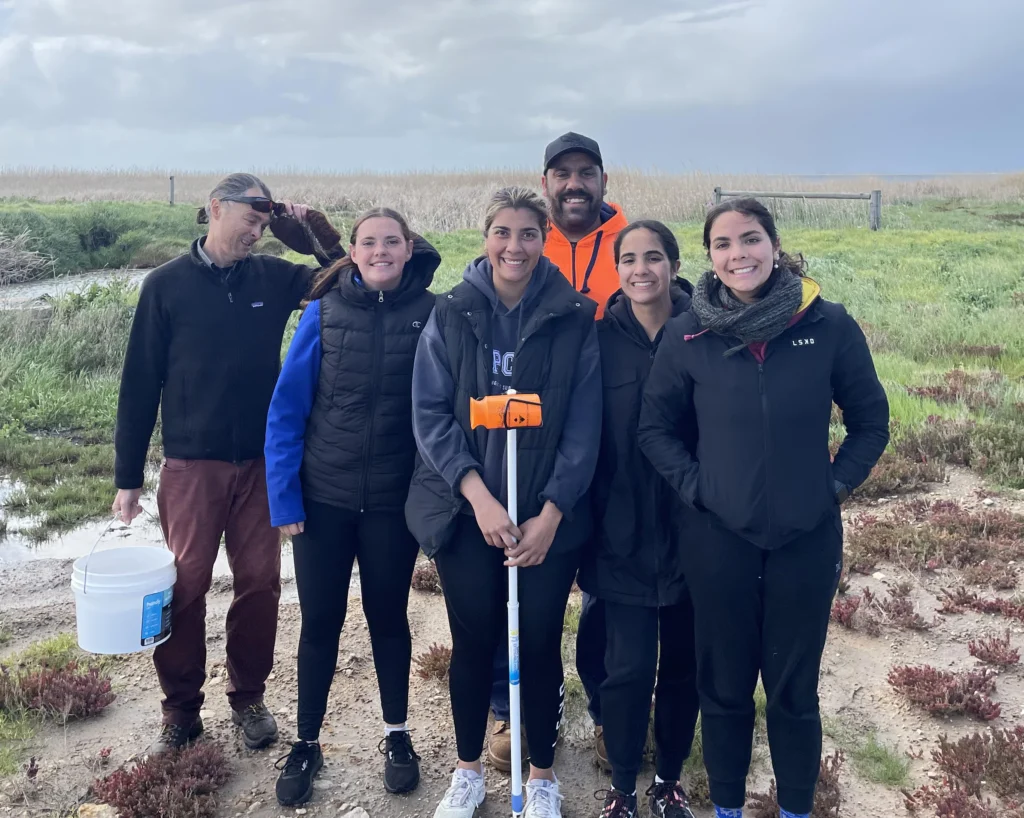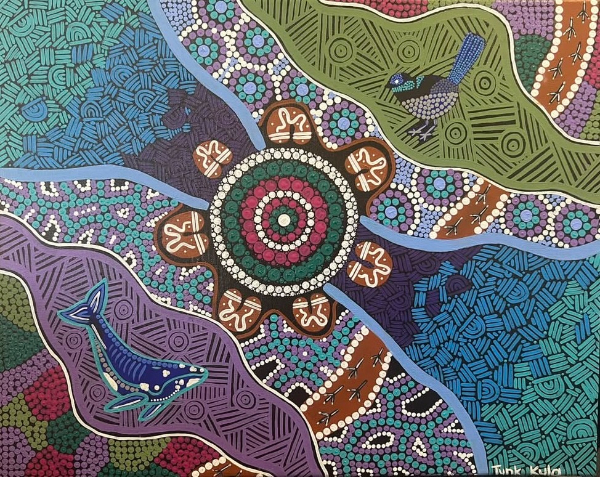The CLLMM region is culturally significant to the Ngarrindjeri and First Nations of the South-East communities. It has been their home for thousands of years and will continue to be their home in the face of future climate change. The First Nations knowledge of the region will be critical for the CLLMM Research Centre to understand the implications of future climate change in the region as they have oral histories and Creation stories which connect them to place, time and their ancestors. The CLLMM region is described in detail throughout these histories and provides an insight into how the various environments of the region were created and interact with each other, and how to live sustainably within them.
The CLLMM Research Centre supports First Nations community well-being, providing an opportunity for knowledge creation and sharing, and the incorporation of the scientific knowledge of First Nations, the community, governments and researchers into the management of the region. The CLLMM Research Centre will achieve this through locally-based research in which community and First Nations can participate and lead in cultural and scientific activities, that build upon existing cultural knowledge and empowers communities to take charge of the management of their land and waters.


Sea Country Stories from Ngarrindjeri Country on the lower Murray River and Coorong is an immersive experience of being on Yarlawa Ruwi [Sea Country] with cultural icon and Ngarrindjeri elder Major ‘Moogy’ Sumner as he demonstrates how to make the kaiki [the freshwater reed spears] harvested from Lake Alexandrina and yarns about what story and Sea Country mean to him. You will hear stories about fishing with the pelicans, spearing flounder at night, and how to find a stingray in the stars! Then join the kuti fishers and artists at Goolwa, who shuffle for cockles in the sand, sharing how they practice sustainable fishing using traditional techniques to protect the kuti [pipi cockles] for the future.
Support for this project was provided by National Science Week 2022, South Australian Maritime Museum, Kuti Co., Goolwa Pipi Co., and Marine Stewardship Council.
Visit Sea Country Stories on Mondays, Wednesdays and Fridays from 10am to 2 pm (pending staff availability) at the CLLMM Research Centre, Level 1, 92 Barrage Road, Goolwa, SA.

The CLLMM Region is comprised of primarily 2 Aboriginal Nations:
The Ngarrindjeri nation is an Aboriginal nation consisting currently of 3 main dialect groups; the Ramindjeri; Yaraldi and; Tanganekald. These dialect groups are further divided into 18 Laklinyerar (clans), then further into individual family groups who occupy the lands and waters of the CLLMM Region, and held their own Nga:tjar (totems). The Ngarrindjeri nation extends up the Murray River from Lake Alexandrina and Lake Albert, down the length of the Coorong and through the coastal area to Encounter Bay.
Come and join us in 2025 to have a yarn in Ngarrindjeri and hear about the exciting projects we’ve been working on at the CLLMM Research Centre. Whether you’re just starting or you’re a deadly thuggari yanamaldi, everyone is welcome. This is a relaxed space to connect, share and learn together. We’ve scheduled online, First Nations only and session for everyone. Click on the register button for dates and more information.
